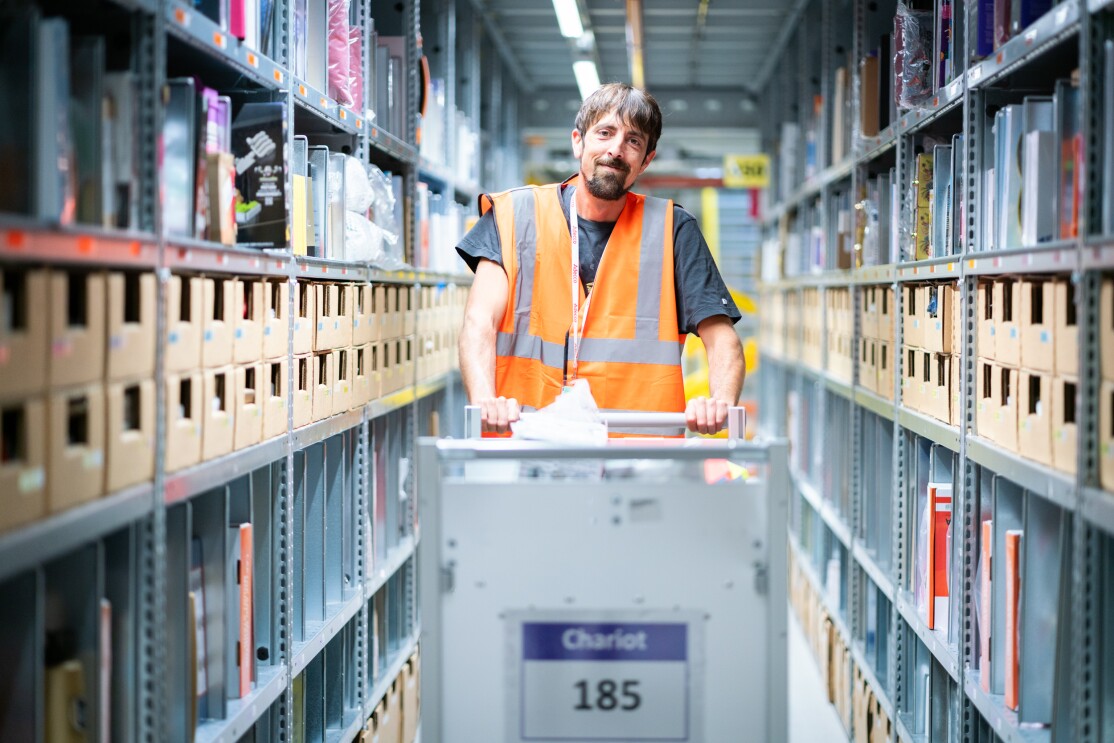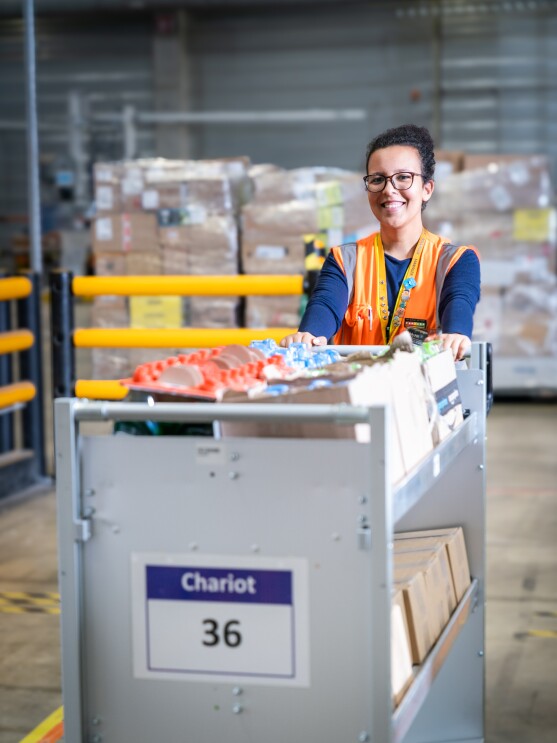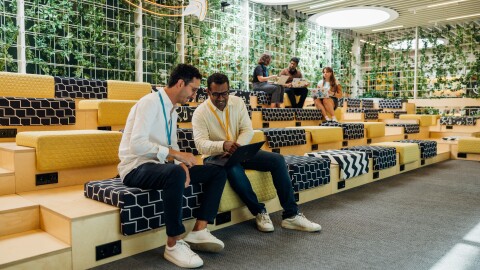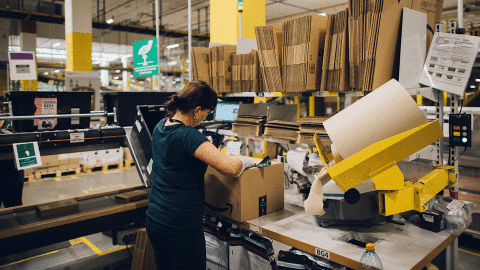At Amazon, we are passionate about leveraging technology to make our employees' work experience better. Safety is our top priority, and that's why we continuously introduce new innovations like AI-powered robotics, advanced sorting systems, and autonomous vehicles across our fulfilment network to take away repetitive motion and create a safer workplace. However, in addition to implementing cutting-edge technology, we also make significant investments to modernise and upgrade our existing fulfilment centres (FCs) themselves.
In 2023 alone, we invested over €450 million into the continuous improvement of our more than 80 European FCs. These investments cover refresh projects like overhauling entrances, reception areas, break rooms, restrooms and parking lots, as well as projects that are based on employee feedback and directly benefit them every day. At one FC we invested €150,000 to replace 200 carts with new, lighter-weight versions that are easier for employees to maneuver. With operations of our scale, even small changes can have a big impact. Last year we spent over €350,000 to improve the lighting systems that support pickers and packers at their workstation to find the right shelf. We strive to make our FCs world-class workplaces that are modern, efficient, and an environment where our teams can thrive.
Making work lighter in Sevrey, France

Since the launch of our first FC in France in 2000, we have kept investing into our buildings to ensure that we keep our leading edge when it comes to delivering for customers and ensuring our employees work in a safe and engaging environment. A good example is our LYS1 fulfilment centre in Sevrey, France. Originally, the building handled clothes and apparel, or “softlines” as this product range is called in the industry. In 2023, we decided to give this building a major makeover, so that the team could now handle “hardlines”, which includes most of the rest of the small and medium-sized standard Amazon selection, from books and consumer electronics to toys and pet food.
It was after this major makeover that the LYS1 team sought to make work lighter on employees. One artefact of its history of handling t-shirts and party dresses were about 150 carts to move inventory along the process. These carts where chunky and heavy, and due to the special layout of LYS1, had to be moved by employees over longer distances than in other parts of the FC. Working from employees’ comments, the local team started looking for lighter alternatives.
In an environment that is focused on safety and ensuring customers get their orders on time, simple changes like this must be considered thoroughly. Does it actually help employees? Is it safe and ergonomic to handle? How does it interact with the other equipment and technology we are using? The LYS1 team could have easily taken a cart model that is already in use in other Amazon buildings, but they insisted on the highest standards to ensure the investment would deliver the best results: making the work of the team easier and safer. They took an existing model and worked with the manufacturer to make it lighter and easier to handle. They presented prototypes to employees as well as the Health and Safety team, and did research on ergonomics and productivity. In the end, the team came up with a model that is 30kg lighter than the previous model. Moving less weight is not only more ergonomic for employees; the new cars are also easier to control, reducing the risk of collisions with equipment or other employees in the building.
Putting employees in the right light in Mönchengladbach, Germany

Our DUS4 fulfilment centre in Mönchengladbach was designed to have the latest robotics technology when we launched in 2019. Since then, the team has never stopped adding technology and building a better, safer workplace for employees and enabling faster deliveries for customers. Like in any Amazon Robotics building, the robotic drives in DUS4 bring shelves with products to the employees who pick and stow the items. Instead of the employees having to walk to the shelves, they now work at ergonomic workstations and a light from a projector supports employees to find the exact place in the shelf where they need to pick or store the item.
As our FCs are well-lit and have natural light, the light from the projector competes with other sources of light, and the employee feedback was that they had a hard time identifying the right spot, and straining their eyes looking for it. The DUS4 team researched how smarter LED lighting would do the job and looking at the standard in the latest FC buildings in the network, they found that a new generation of projectors had been introduced. They then built a business case to retrofit these new projectors into the workstations in their building.
Not only did employees have to spend less time straining their eyes to find the right spot, but the latest generation of projectors also had a twice as long LED life, and their controls would shut down the projector when it wasn’t needed. At the same time, this reduced electricity consumption while having just the right light in the right places. 84 out of 250 workstations have been retrofitted with the new projector so far, and as employee feedback indicates that this solution helps them do their work, the team is planning a further roll-out.










